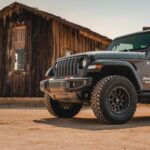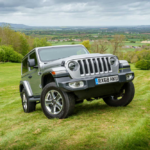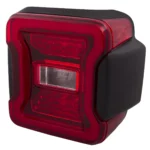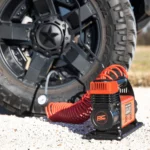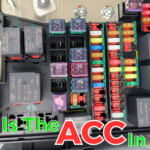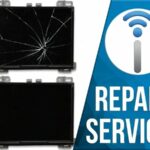If your Jeep won’t start when hot, check the ignition system and cooling components for potential issues. Hot weather can cause electrical components to malfunction, preventing the engine from starting.
It’s crucial to inspect the battery, starter motor, and fuel system for any signs of overheating or wear. Additionally, monitoring the engine temperature while driving and ensuring proper cooling system maintenance can help prevent future start-up problems. Regularly servicing your vehicle and addressing any issues promptly can keep your Jeep running smoothly, even in hot conditions.
Ensuring that all components are working effectively will help diagnose and resolve any starting issues your Jeep may be experiencing when hot.
Common Reasons For Jeep Not Starting When Hot
Experiencing a Jeep not starting when hot can be frustrating. Common reasons may include a faulty starter, overheating issues, or fuel system problems. It’s essential to address these issues promptly to prevent further complications and ensure your Jeep starts reliably in all conditions.
One of the common reasons a Jeep may not start when hot is due to a faulty fuel system. Issues such as a clogged fuel filter or fuel pump can prevent proper fuel delivery to the engine.
If your Jeep is not starting when hot, an overheated engine could be the culprit. Extreme heat can lead to vapor lock, where fuel turns to vapor before reaching the engine.
Faulty Fuel System
If your Jeep won’t start when hot, one of the common causes could be a faulty fuel system.
Clogged Fuel Filter
One potential reason for hot-start issues is a clogged fuel filter. A blocked filter can restrict fuel flow, leading to starting problems.
Vapor Lock
Vapor lock can occur when the fuel in the line vaporizes due to excessive heat, causing starting difficulties.
Overheated Engine
An overheated engine is often a common cause of a Jeep that won’t start when it’s hot. When the engine overheats, it can lead to various issues affecting the cooling and ignition systems, making it difficult for the vehicle to start. It’s crucial to understand the underlying problems related to the cooling and ignition systems to address the issue effectively.
Cooling System Issues
The cooling system plays a vital role in maintaining the engine’s temperature within the optimal range. Common issues that can lead to overheating and subsequent starting problems include:
- Coolant levels: Ensure the coolant levels are adequate and there are no leaks in the system.
- Thermostat malfunction: A faulty thermostat can cause the engine to overheat, leading to starting difficulties.
- Radiator blockage: Debris or sediment accumulation in the radiator can hinder proper cooling, causing the engine to overheat.
Ignition System Problems
The ignition system is responsible for initiating the combustion process in the engine. When the system encounters issues, starting the Jeep can become challenging. Here are some potential problems:
- Spark plug issues: Worn-out or fouled spark plugs can contribute to starting issues, especially when the engine is hot.
- Ignition coil failure: A malfunctioning ignition coil can lead to inconsistent spark generation, affecting the starting process.
- Fuel delivery problems: Inadequate fuel supply or clogged fuel filters can hinder the ignition process, resulting in difficulty starting the vehicle.
Troubleshooting Techniques
If you own a Jeep and find yourself in a situation where it won’t start when hot, don’t fret! This article will provide you with the troubleshooting techniques you need to get your Jeep up and running again. We will cover two important areas – checking the fuel delivery and inspecting the cooling system. By following these steps, you can diagnose and potentially fix the issue, saving you time and money. Let’s jump right into it!
One of the common reasons your Jeep won’t start when hot is poor fuel delivery. Here’s a step-by-step guide to help you troubleshoot this issue:
- Step 1: Check Fuel Tank – Ensure that your Jeep has an adequate amount of fuel in the tank. Low fuel levels can cause starting problems.
- Step 2: Inspect Fuel Pump – The fuel pump is responsible for delivering fuel to the engine. Check if the pump is properly functioning by listening for a buzzing sound when the key is turned on. If you don’t hear anything, it may indicate a faulty fuel pump.
- Step 3: Check Fuel Filter – A clogged fuel filter can restrict fuel flow and prevent your Jeep from starting. Inspect the filter for any signs of dirt or debris. If necessary, replace it with a new one.
- Step 4: Examine Fuel Lines – Look for any leaks or damages in the fuel lines. Leaks can disrupt the proper fuel delivery to the engine, resulting in starting issues.
- Step 5: Ensure Fuel Injectors are Clean – Dirty or clogged fuel injectors can affect fuel spray, leading to starting problems. Consider using fuel injector cleaner or consulting a mechanic for a thorough cleaning if needed.
An overheating engine can also cause your Jeep to refuse starting when hot. Follow these steps to evaluate your cooling system:
- Step 1: Check Coolant Level – Inspect the coolant reservoir to ensure it contains an appropriate amount of coolant. Low coolant levels can cause overheating and starting issues.
- Step 2: Inspect Radiator and Hoses – Check for any leaks, damages, or blockages in the radiator and cooling hoses. These issues can result in inadequate cooling, leading to engine overheating.
- Step 3: Test Thermostat – A malfunctioning thermostat can hinder the proper regulation of engine temperature. Consider testing or replacing the thermostat if necessary.
- Step 4: Check Radiator Fan – Ensure that the radiator fan is functioning correctly. A faulty fan may not provide enough airflow, causing the engine to overheat.
- Step 5: Assess Water Pump – The water pump circulates coolant throughout the engine. Inspect it for any signs of leaks or malfunctions.
By working through these troubleshooting techniques for fuel delivery and cooling system, you can pinpoint potential issues and take appropriate measures to resolve them. Remember, if the problem persists, it’s always best to seek professional assistance. Don’t let a hot start issue keep you off the road. Get back behind the wheel of your Jeep with confidence!
Check Fuel Delivery
If your Jeep won’t start when hot, the problem could lie with the fuel delivery system. Proper fuel delivery is essential for your engine to ignite and run smoothly. There are a few key components to examine to determine if fuel delivery is the culprit.
Test Fuel Pump Functionality
The fuel pump is responsible for pumping fuel from the gas tank to the engine. If the fuel pump is not functioning properly, it may not be delivering enough fuel to start the engine, especially when it’s hot. To test the fuel pump functionality:
- Locate the fuel pump relay in your Jeep. This will typically be in the power distribution center or fuse box.
- Remove the relay and inspect it for any signs of damage, such as melted plastic or burnt contacts.
- Use a multimeter to check if the relay is receiving power. Set the multimeter to voltage mode and touch the probes to the appropriate terminals on the relay.
- If there is power going to the relay but it is not engaging, the relay may be faulty and needs to be replaced.
- If the relay is functioning correctly, move on to testing the fuel pump itself.
- Disconnect the fuel pump electrical connector and connect a jumper wire to the positive terminal of the battery.
- Touch the other end of the jumper wire to the fuel pump’s positive terminal. You should hear the fuel pump engage and see fuel being pumped out.
- If the fuel pump does not activate or no fuel comes out, it is likely malfunctioning and needs to be replaced.
Examine Fuel Lines
The fuel lines carry fuel from the fuel tank to the engine. Over time, these lines can become clogged, damaged, or loose, leading to fuel delivery issues. To examine the fuel lines:
- Visually inspect the fuel lines for any signs of damage, such as cracks, leaks, or loose connections.
- Check for any obstructions or clogs by gently blowing air through the lines or using compressed air.
- If you notice any damaged or clogged lines, they will need to be repaired or replaced.
By checking the fuel delivery system, specifically the fuel pump functionality and fuel lines, you can troubleshoot why your Jeep won’t start when hot and take the necessary steps to fix the issue. Remember to always follow proper safety measures when working with fuel-related components.
Inspect Cooling System
When your Jeep won’t start when it’s hot, one of the potential culprits could be issues with the cooling system. Inspecting the cooling system is crucial in troubleshooting this problem, as a malfunctioning cooling system can cause the engine to overheat, leading to starting issues.
Check Coolant Levels
Ensure that the coolant levels in your Jeep are adequate. Low coolant levels can lead to overheating, which may result in your vehicle not starting when hot. Use the markings on the coolant reservoir to check that the levels are within the recommended range.
Assess Radiator Performance
Check the radiator for any signs of damage or corrosion. A damaged or clogged radiator can impede the cooling process, leading to overheating. Inspect the radiator fins to ensure they are not bent or blocked, hindering the airflow. Additionally, check for any leaks in the radiator that may be causing a loss of coolant.
Ignition System Inspection
When your Jeep won’t start when hot, conducting an Ignition System Inspection is crucial. The ignition system plays a vital role in starting the vehicle smoothly.
Check Spark Plugs
Begin by inspecting the spark plugs for any signs of wear or damage. Ensure they are properly gapped and free from carbon buildup for optimal performance.
Evaluate Ignition Coils
Next, assess the ignition coils to ensure they are functioning properly. Look for any cracks or breaks that may cause misfires when the engine is hot.
Battery And Starter Examination
If your Jeep won’t start when hot, it’s crucial to conduct a thorough examination of the battery and starter components to identify potential issues. Testing the battery health and inspecting the starter motor can help pinpoint the root cause of the problem.
Test Battery Health
To determine if the battery is the culprit, you can perform a simple voltage test using a multimeter. Ensure the battery is properly charged before testing. Low voltage readings indicate a weak or failing battery that may need replacement.
Inspect Starter Motor
The starter motor plays a vital role in initiating the engine and can malfunction due to various reasons. Carefully examine the starter motor for any visible damage, such as corrosion or worn-out components.
Tackling Vapor Lock Issues
When dealing with a Jeep that won’t start when hot, vapor lock issues can be a common culprit. Tackling vapor lock is essential in ensuring your Jeep continues to run smoothly, especially in hot weather conditions. Understanding the significance of cooling fuel lines and the use of heat insulation is crucial in overcoming vapor lock problems.
Cooling Fuel Lines
Properly cooling fuel lines can help prevent vapor lock in your Jeep. Ensure that the fuel lines are correctly routed to avoid proximity to sources of heat such as the exhaust system. Additionally, regular maintenance and inspection of your fuel lines can help avoid potential vapor lock issues.
Use Heat Insulation
Utilizing heat insulation for your fuel lines can significantly reduce the risk of vapor lock. Heat-reflective tapes or sleeves can be applied to the fuel lines to shield them from excessive heat, thereby minimizing the chances of vapor lock occurring during hot conditions.

Credit: raybuck.com
Addressing Overheating
Dealing with a Jeep that won’t start when hot can be frustrating, especially if you’re planning a fun off-roading adventure or need to get to work on time. One common culprit behind this issue is overheating. When your engine gets too hot, it can cause various problems, including difficulties starting the vehicle. To help you address this problem, here are some essential steps you can take.
Check Thermostat Operation
The thermostat plays a crucial role in regulating your engine’s temperature. If it’s faulty or stuck, it can cause your Jeep to overheat and subsequently refuse to start when hot. Luckily, checking the thermostat operation is relatively straightforward. Here’s a quick guide:
- Allow your Jeep’s engine to cool down completely. This step is vital to avoid any burns or injuries.
- Locate the thermostat housing, usually positioned on the engine’s upper portion.
- Remove the thermostat housing cover using the appropriate tools.
- Inspect the thermostat for signs of damage, such as cracks or corrosion. If any issues are present, replace the thermostat with a new one.
- If the thermostat appears to be in good condition, it’s still essential to verify its functionality. You can do this by placing it in a pot of hot water and using a thermometer to check if it opens at the recommended temperature.
- Once you’ve confirmed that the thermostat is working correctly, reinstall the housing cover and ensure it is securely fastened.
Inspect Water Pump
Inadequate water circulation caused by a faulty water pump can also lead to overheating and a Jeep that won’t start when hot. It’s crucial, then, to inspect the water pump for any signs of damage or malfunction. Follow these steps to complete the inspection:
- Again, make sure the engine is completely cooled down before beginning.
- Locate the water pump, often situated on the front side of the engine, driven by a pulley and belt.
- Visually examine the water pump for any leaks, cracks, or excessive wear. Pay close attention to the pump’s impeller, ensuring it spins freely without any obstructions.
- If you notice any issues with the water pump, it will likely need to be replaced. Consult your vehicle’s manual or reach out to a mechanic for the appropriate replacement process.
- For added peace of mind, consider flushing the cooling system and replacing the coolant regularly. This preventive maintenance can help prevent future overheating issues.
By addressing potential overheating issues in your Jeep, you can improve its overall performance and avoid the frustration of a vehicle that refuses to start when hot. Remember to perform regular maintenance checks and consult a professional if you encounter persistent problems or need further assistance.
Preventive Maintenance Tips
Regular maintenance is crucial to keep your Jeep running smoothly, preventing issues like it not starting when it’s hot. By following these preventive maintenance tips, you can ensure your Jeep’s reliability even in the hottest conditions.
Regular Coolant Flushes
Proper cooling system maintenance is essential to prevent your Jeep from overheating, which can lead to starting problems when the engine is hot. One of the key maintenance tasks is regular coolant flushes. Flushing the coolant removes any contaminants and helps maintain the optimal temperature of your engine.
During a coolant flush, old coolant is drained and replaced with a fresh coolant mixture. This helps prevent the buildup of rust, scale, and other deposits that can negatively affect the cooling system’s performance. It’s recommended to follow the manufacturer’s guidelines for the recommended interval for coolant flushes, which is typically every 2 to 3 years.
Fuel System Cleanliness
A clean fuel system is crucial for efficient combustion and starting your Jeep, especially when the engine is hot. Over time, fuel injectors can get clogged with deposits, leading to problems with fuel delivery and starting difficulties. To prevent this, it’s important to maintain the cleanliness of your Jeep’s fuel system.
Regular fuel system maintenance includes using a fuel system cleaner, which helps remove any deposits and keeps the fuel system clean. These cleaners come in different forms, such as additives that you add to the fuel tank or products that are sprayed directly into the intake system.
| Preventive Maintenance Tips |
|---|
| Coolant Flush |
| Fuel System Cleanliness |
- Schedule regular coolant flushes every 2 to 3 years to maintain the cooling system’s efficiency.
- Use fuel system cleaner additives or sprays to prevent fuel system clogs and starting problems.
- Follow the manufacturer’s maintenance recommendations for your specific Jeep model.
- Maintain proper oil levels and change the oil regularly to ensure optimal engine performance.
- Check and replace spark plugs according to the manufacturer’s recommendations for your Jeep.
By following these preventive maintenance tips, you can minimize the chances of your Jeep experiencing starting issues when the engine is hot. Regular coolant flushes and fuel system cleanliness are essential for keeping your Jeep running smoothly, even in high temperatures.
Remember, a well-maintained Jeep is a reliable Jeep!

Credit: www.youtube.com

Credit: www.turnersvillejeep.com
Frequently Asked Questions For Jeep Wont Start When Hot
Why Does My Jeep Not Start When It’s Hot?
When your Jeep doesn’t start when it’s hot, it may be due to a failing ignition coil, a faulty fuel pump, or a malfunctioning temperature sensor. These components can struggle to function properly in high temperatures, causing starting issues. Consult a professional mechanic to diagnose and fix the specific problem.
What Are The Common Reasons For A Hot Start Issue In A Jeep?
Common reasons for a hot start issue in a Jeep include vapor lock, which occurs when the fuel evaporates too quickly, and a faulty starter motor or solenoid. Insufficient fuel pressure or a failing ignition control module can also contribute to the problem.
Have a qualified technician diagnose and resolve the issue.
How Can I Prevent My Jeep From Not Starting When It’s Hot?
To prevent your Jeep from having hot start issues, ensure proper cooling system maintenance, including a functioning radiator cap and thermostat. Avoid overusing the air conditioning and make sure the fuel system is in good condition. Regularly servicing and inspecting your vehicle can help identify and address any potential problems before they escalate.
Conclusion
Dealing with a Jeep that won’t start when hot can be frustrating. However, with proper troubleshooting and maintenance, you can overcome this issue. Whether it’s checking the battery, fuel system, or cooling system, paying attention to these areas can make a difference.
Remember to consult a professional if needed for a smoother driving experience.
